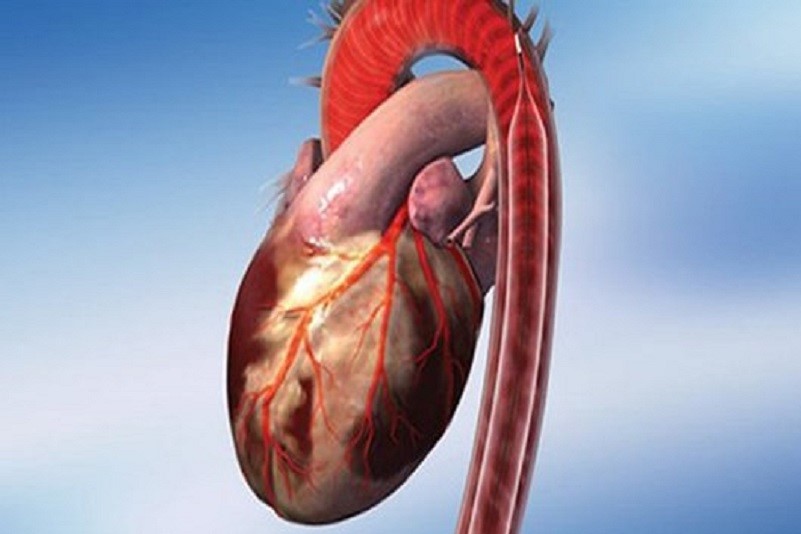
Abnormalities in the transmission of electrical impulses: Wolff Parkinson White Syndrome
Wolff Parkinson White syndrome is a cardiac pathology due to an abnormal transmission of the electrical impulse between the atria and ventricles which can cause tachyarrhythmias and palpitations
Wolff-Parkinson-White syndrome manifests itself with tachyarrhythmias in which the patient experiences excessive heart palpitation, in some cases associated with fainting, dizziness, chest pain, difficulty breathing.
In this syndrome, there will be the presence of an accessory bundle, Kent’s bundle, which connects the atrium and ventricle; in this way when the electrical impulse from the sinus node is dispersed in the atrial wall before reaching the atrioventricular node, Kent’s bundle will pick up electrical signals making the ventricle contract a few milliseconds earlier than normal, creating ventricular pre-excitation.
The tachycardia in Wolff-Parkinson-White syndrome may be atrioventricular reentrant, when it is characterized by an abnormally fast heart rhythm and the tachycardia is classified as supraventicular.
Atrial fibrillation is a pathology characterized by the fast and disorganized contraction of the atria, triggered by electrical impulses from myocardial muscle cells which, under normal conditions, thanks to the presence of the atrioventricular node, are “filtered” and sent in smaller quantities towards the ventricles causing these not to contract as fast as the atria.
The presence of the bundle of Kent instead allows the atrial impulses to be picked up without a filter by sending electrical signals of contraction to the ventricles, increasing the frequency originating a tachyarrhythmia that could be lethal.
The most affected are healthy young people, who therefore have a heart that is not necessarily sick, who complain of episodes of occasional tachycardia, while in others they do not warn of any discomfort.
Wolff Parkinson White syndrome diagnosis
Wolff Parkinson White is diagnosed with an electrocardiogram.
Those affected by this pathology can experience sudden cardiac death, due to the high-speed propagation of the atrial arrhythmia towards the ventricles.
How is Wolff-Parkinson-White syndrome treated?
Wolff Parkinson White patients who have tachyarrhythmias should be treated with:
- Vagal manoeuvres, in order to reduce the heart rate, if the patient is correctly instructed can perform this maneuver autonomously.
- Administration of drugs that block conduction through the atrioventricular node by interrupting one of the arrhythmia arms. Drugs that should be avoided in case of atrial fibrillation because in some cases they could increase the frequency of conduction to the ventricles through the accessory pathway resulting in ventricular fibrillation.
- Electrical cardioversion, a procedure in which the electrical conduction of the heart is “reset” by the defibrillator, in order to restore a normal heart rate.
Ablation is considered the definitive solution in case of frequent recurrences.
It is a minimally invasive procedure that allows you to cancel the anomalous electrical paths, in this case they are Kent’s bundles.
It sees the partial destruction of the accessory pathway, by catheter ablation, i.e. delivery of energy at a specific frequency through a catheter inserted into the heart; it is successful in over 95% of cases.
Ablation is particularly useful in young patients who may otherwise be forced to take antiarrhythmic drugs for life.
Read Also
Emergency Live Even More…Live: Download The New Free App Of Your Newspaper For IOS And Android
What Are The Risks Of WPW (Wolff-Parkinson-White) Syndrome
Wolff-Parkinson-White Syndrome: What It Is And How To Treat It
Do You Have Episodes Of Sudden Tachycardia? You May Suffer From Wolff-Parkinson-White Syndrome (WPW)
Wolff-Parkinson-White Syndrome: Pathophysiology, Diagnosis And Treatment Of This Heart Disease
Semeiotics Of The Heart And Cardiac Tone: The 4 Cardiac Tones And The Added Tones
Heart Murmur: What Is It And What Are The Symptoms?
Branch Block: The Causes And Consequences To Take Into Account
Cardiopulmonary Resuscitation Manoeuvres: Management Of The LUCAS Chest Compressor
Supraventricular Tachycardia: Definition, Diagnosis, Treatment, And Prognosis
Identifying Tachycardias: What It Is, What It Causes And How To Intervene On A Tachycardia
Myocardial Infarction: Causes, Symptoms, Diagnosis And Treatment
Aortic Insufficiency: Causes, Symptoms, Diagnosis And Treatment Of Aortic Regurgitation
Congenital Heart Disease: What Is Aortic Bicuspidia?
Atrial Fibrillation: Definition, Causes, Symptoms, Diagnosis And Treatment
Ventricular Fibrillation Is One Of The Most Serious Cardiac Arrhythmias: Let’s Find Out About It
Atrial Flutter: Definition, Causes, Symptoms, Diagnosis And Treatment
What Is Echocolordoppler Of The Supra-Aortic Trunks (Carotids)?
What Is The Loop Recorder? Discovering Home Telemetry
Cardiac Holter, The Characteristics Of The 24-Hour Electrocardiogram
Peripheral Arteriopathy: Symptoms And Diagnosis
Endocavitary Electrophysiological Study: What Does This Examination Consist Of?
Cardiac Catheterisation, What Is This Examination?
Echo Doppler: What It Is And What It Is For
Transesophageal Echocardiogram: What Does It Consist Of?
Paediatric Echocardiogram: Definition And Use
Heart Diseases And Alarm Bells: Angina Pectoris
Fakes That Are Close To Our Hearts: Heart Disease And False Myths
Sleep Apnoea And Cardiovascular Disease: Correlation Between Sleep And Heart
Myocardiopathy: What Is It And How To Treat It?
Venous Thrombosis: From Symptoms To New Drugs
Cyanogenic Congenital Heart Disease: Transposition Of The Great Arteries
Heart Rate: What Is Bradycardia?
Consequences Of Chest Trauma: Focus On Cardiac Contusion
Performing The Cardiovascular Objective Examination: The Guide


